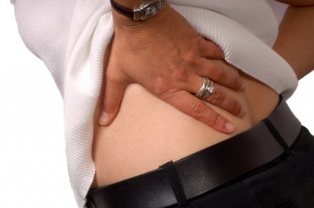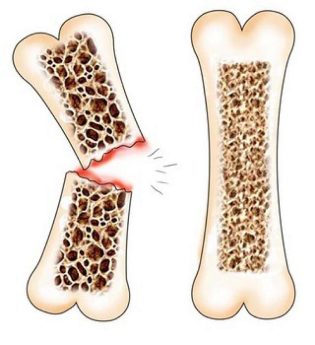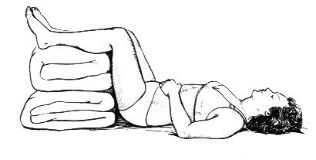Lower back pain occurs more often. The patients say, "I have a sore back", "pinched waist", "cross back". If the pain is inconsiderate, I can't say that "hurt back", "back", "aching loins". Sometimes the pain is described as burning in the lower back.
The lower part of the so-called lower-back - the place where the end ribs to the coccyx. Maybe it's a separate word to refer to the waist was required in order to specify the place where it hurts the most. After all, if you have back pain, in most cases, the pain is back.

Which can be a pain,
Most often the pain is sudden, sharp, acute. In this case we are talking about, lumbago (old folk name cross). The pain is described as sharp, "shooting". Motion tied, and sometimes impossible, to stand up. The movement the pain increases.
The pain last a few minutes, the last a significant time (a few days). It may be the attack, but the pain is more about you reminds me of, but often the pain returns, people get used to the back pain.
Lower back pain is not only sharp (sharp), she can wear pull character can be chronic. A mild but constant pain in the loins, sometimes aggravated by, for example, physical exertion, infectious disease, colds, etc. the so-called lumbar region. Sometimes there is no pain directly, but stored in the low back stiffness the patient is experiencing discomfort.
Causes of lower back pain
Lower back pain caused by a variety of reasons, but the statistics are the following:
- 90% of the pain is caused by problems in the spine, the back muscles;
- 6%, because the pain is a kidney disease;
- 4% - diseases of other internal organs (urinary system, colon).
The sharing of the spine account for most all cases of back pain, and it's not a coincidence. The people, the center of gravity of the body at the level of the waist, and then walk the entire burden almost entirely falls on the lumbar vertebrae (in animals, to continue four legs, it's not a problem). When a person sits down, the lumbar vertebrae, sacrum experience the same force, the pressure which the diver presses 170-metre layer of the water. Of course, this area is especially sensitive.
Diseases of the musculoskeletal system lower back pain:
- a pinched sciatic nerve. The nerve roots extending to the spinal cord are squeezed the adjacent vertebrae. When that happens, it's a sharp, stabbing pain. Usually disturb the roots becomes possible as a result of degenerative changes in the spine (osteochondrosis): the intervertebral discs that separate the vertebrae from each other is destroyed, the gap in the vertebrae to narrow, sudden movement (tilt, rotation) can lead to a pinched nerve branch;
- sciatica (sciatica). The nerve roots become inflamed. The inflammation of the nerve roots is called sciatica (lat. radicula - "root"); indicates inflammation of the sciatic nerve sometimes a special name - sciatica. The defeat of the sciatic nerve can be lumboischalgia - lower back pain, spreading in the thigh, leg during the sciatic nerve;
- herniated disc - protrusion at a fraction of the intervertebral disc into the spinal canal. Occurs as a result of injury or degenerative changes in the spine (osteochondrosis);
- myositis of the lumbar muscles. Myositis is an inflammation of the skeletal muscles. Because of the myositis lumbar muscles may be cold or sudden tension.

Also lower back pain caused by diseases such as multiple sclerosis, degenerative sacroiliitis, osteoporosis.
The back pain prevention
In the event the lower back pain is often triggered uncaring attitude to their own health. The pain can be caused by:
- longer stays in the same position (for example, sedentary work);
- the bad posture;
- low mobility;
- excessive physical exertion.
All these factors contribute to the disease, indicating pain in the lower back. The risk the pain may be reduced if you follow the following tips for doctors:
- follow the car;
- avoid the uncomfortable position of working sitting down. It is desirable that the knee is slightly higher than the hip bones. Use a low chair or to stand on his own two feet. A small pillow between the lower part of the backrest;
- if sedentary work need to from time to time have to move. Every hour five minutes; how to lift some weights
- it is desirable to sleep pillowtop mattress (flexible, tough);
- weight lifting is necessary for the bending of the knee, not back. That is, you need to sit down, bending your knees and then straighten them out, while straight in the back;
- variable load should be evenly distributed in the two hands to carry the full load with one hand (a heavy bag);
- every day you should do a series of exercises aimed at strengthening muscles of abdomen and back.
Lower back pain kidney disease
If you have back pain, it is important to determine what the cause of the pathology of the musculoskeletal system or a disease of the kidney (or other organs). Diagnostics must be performed by a doctor. There is, however, suggests that the pain is caused by problems the kidneys or (and) other organs of the urogenital system. The manifestation of these symptoms is advisable to see a doctor-urologist. Kidney disease (or wider - the genitourinary system) is suspected, if the pain is accompanied by:
- the general deterioration of the disease (lethargy, drowsiness, weakness, fatigue);
- swelling of the eyelids, of the face. Swelling is particularly pronounced in the morning after waking up, but alleviating the night;
- the increase in body temperature, chills, sweating;
- loss of appetite, nausea, vomiting;
- increased or painful urination;
- the change of the characteristics of urine (you can make a more concentrated color or vice versa - is a colourless, contain mucus or blood);
- the increase in blood pressure.
It is also important to signal that the lower back pain caused by problems of the internal organs, and the musculoskeletal system, the independence of the position of the body: the change of the body position, limb pain is not reinforced, not reduced. However, a long-term stay in an upright position with the pathologist, check the pain can worsen. Value is localization of pain. If you have kidney disease that the pain is often observed on the one hand (since usually I don't suffer, only one kidney). Kidney pain not be restricted to the lower back will spread throughout the ureter, the groin, external genitals, internal thighs.
Aching back: what do I do?
The lower back pain is a symptom of the disease, which requires treatment. It is therefore necessary to consult a doctor. But if a sudden attack of acute pain ("lumbago" typical sciatica), you first need to ease the pain. Doctors advice:
- use slightly warm. Tie the waist woolen scarf or a wool belt;
- the pain;
- you need to take the posture that allows you to relax your back muscles. We recommend that you lie on your back on a hard, flat surface (Table); the legs should be raised, bent at the knees, why is it necessary for them to have a folded blanket or pillow. (The earth, to go to undesirable blow out of the draft).
The proposed position is not dogma. The patient calmed down, so there is no other possible positions; for example, lying on the Board you have to put up with knees bent legs, holding between them a cushion. You can try to lie on your stomach and stretch your legs by placing a pillow under the ankle. If the sharpness of the pain is removed, this does not mean that the doctor is no longer necessary. Without proper treatment, the seizures will come back, the situation is deteriorating.

What is the doctor address the complaints of low back pain?
If your back pain is best to consult a therapist, because, first, it is necessary to identify the disease what organs are causing the pain. Depending on the results of the study may need to consult a health care professional. Order:
- consult a neurologist for assessing the spine, back muscles, nervous system;
- consult a doctor-urologist in the case, if the disease is suspected to be the urinary system;
- consultation of the gynecologist - in case of suspicion or presence of chronic diseases of the organs of the female reproductive system;
- General blood test, urine test, to confirm or exclude the inflammatory nature of the disease;
- x-ray of the spine ;
- Ultrasound of the hip joint ;
- as well as other studies.





































